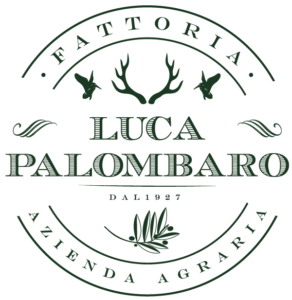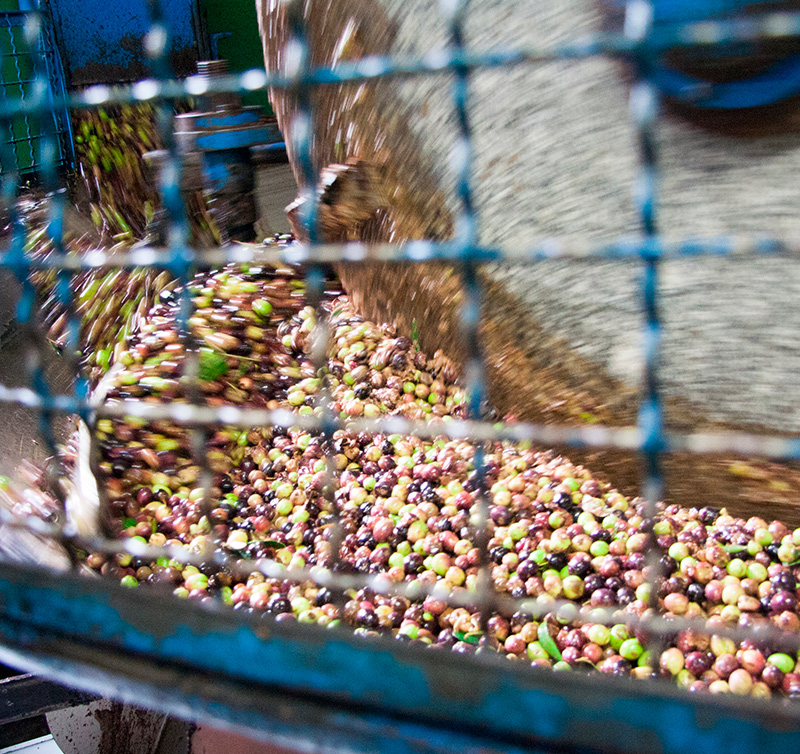
Fattoria Palombaro is open all year long, come and visit us!
Production of extra-virgin olive oil is an art which developments in technology has modified in its form but not in its substance. We are only talking about “extra-virgin” because that is the definition of olive oil obtained solely from mechanical cold pressing at legally-controlled temperatures of under 28°C. The acidity of an extra-virgin olive oil, one of the fundamental parameters for its qualitative assessment, must never exceed 0.8%. Here at the Fattoria Palombaro we only produce extra-virgin olive oil and only from our own olives, which we look after in all phases, from pruning the trees and caring for the land to harvesting and processing.
The most common varieties of olive in this area are Frantoio, Leccino, Moraiolo and Dolce Agogia. These four varieties are used in producing extra-virgin olive oil with DOP “Umbria” with the geographic mention “Colli del Trasimeno”. The Dolce Agogia is the most traditional variety at Lake Trasimeno, and its name has the lovely meaning of “sweet drop” of oil. Particularly rich in polyphenols and with a low chlorophyll content, oil produced from the Dolce Agogia tends more towards a yellowish colour and has sweet, delicate aromatic notes. We have made a very high quality, monocultivar extra-virgin oil from these olives, the fruit of our centuries-old trees, splendid plants with thick foliage and a majestic profile.
EVO oil is the most characteristic element of the Mediterranean diet. According to the experts it is better than other oils due to the type of fats it contains and the presence of polyphenols. In particular, extra-virgin olive oil contains oleic acid which helps to improve the levels of “good” cholesterol, HDL, and also polyphenols and antioxidants that protect our organism from attack by free radicals. Extra-virgin olive oil gives ever-more promising results in diabetes prevention and liver protection.
Our olive trees are pruned respecting their natural cycle. Traditional polyconic vase pruning takes place in the period between December and May.
It aims to take care of the plant and to avoid the alternation of production typical of olive trees.
Pruning the olive tree in a professionally is the fundamental prerequisite for the production of the high quality EVO: only a few people in the world today can do in the best possible way.


The harvest of the olive trees is done with facilitators and beaters avoiding an excessive maturation of the olive that could jeopardize the precious characteristics of the olive oil; the best period for harvesting the olives for the olive oil is between mid-October and the beginning of December, if the weather conditions are favorable.
Once harvested, the olives are stored in special aerated boxes and taken immediately to be milled to ensure the high quality of the oil.
Until 2016, the oil was produced in the mill of the Fattoria according to the ancient method: with the granite mills to obtain the pasta, with cold mechanical pressure to extract the oil and with the separator to eliminate residues. Until the beginning of 2000 the oil was even preserved in the ancient jars, the Zire (still visitable on the farm), a fascinating technique then replaced by stainless steel tanks.
Since 2017 the farm has decided to produce its own oil with the modern continuous-cycle machinery, to ensure that the product does not lose its organoleptic and nutritive qualities due to contact with oxygen.
The ancient oil mill has remained intact to be told in a museum tour during the guided tours and purchases in the company.
The EVO oil produced are: the Belfiore, monocultivar of Dolce Agogia, and the Roncone, blend of Frantoio, Moraiolo and Leccino.


Until a few years ago, the extra virgin olive oil used to be stored in 40 ancient earthenware jars, in a room called “Ziraia” (“Ziro” in the umbrian dialect means “jar”), perhaps unique in its genre. With this charming and ancient technique, the oil was protected from light and excessive thermal changes.
Today, following the new regulations about the conservation of food products, storage takes place in stainless steel tanks; nevertheless, Ziraia is still there, not only as a real symbol of the farm history, but also to demonstrate the evolution of agricultural cultural practices.